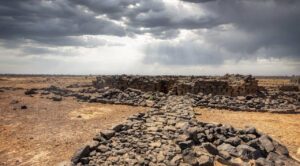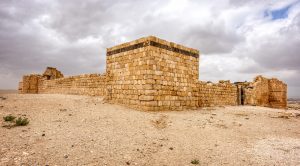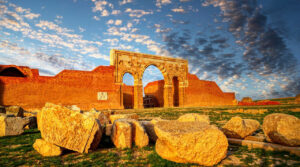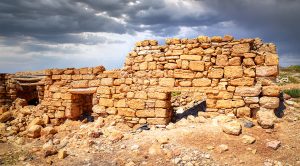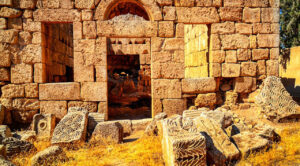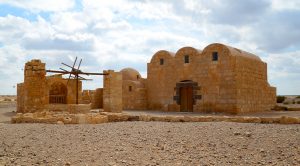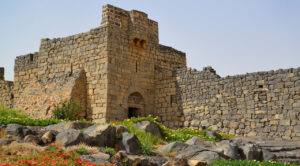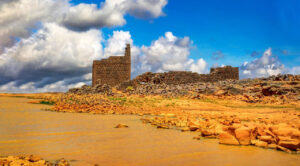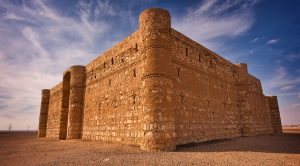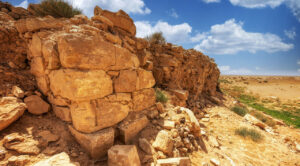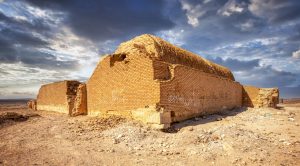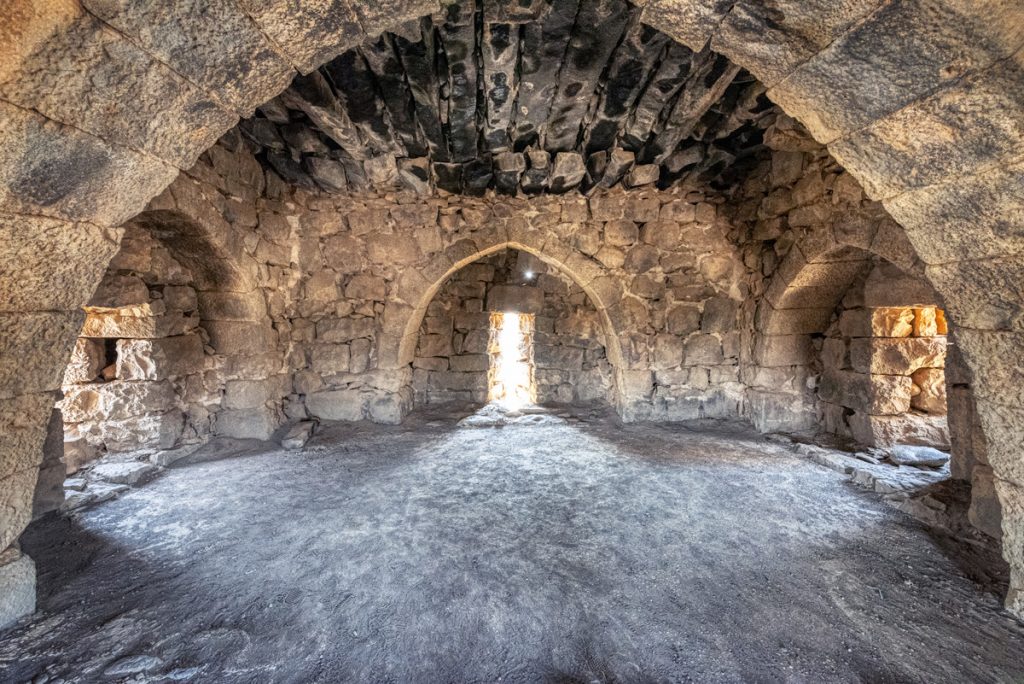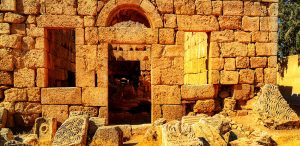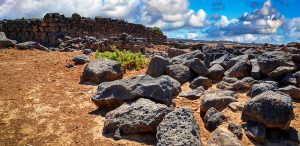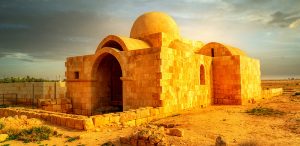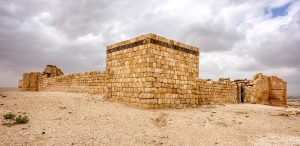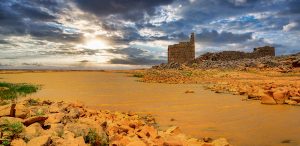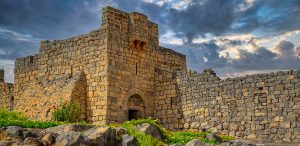Qasr Azraq is often included on day trips from Amman to the Desert Castles, along with Qasr Kharana and Qasr Amra, both east of the capital and reached via Highway 40. Visitors can explore most of the castle, both upstairs and downstairs, except for some sections closed off while the rock is shored up. Its strategic value came from the nearby oasis, the only water source in a vast desert region. The settlement was known in antiquity as Basie and the Romans were the first to make military use of the site, and later an early mosque was built in the middle.
It did not assume its present form until an extensive renovation and expansion by the Ayyubids in the 13th century, using locally quarried basalt which makes the castle darker than most other buildings in the area. Later, it would be used by the Ottoman armies during that empire’s hegemony over the region. During the Arab Revolt, T.E. Lawrence based his operations here in 1917–18, an experience he wrote about in his book Seven Pillars of Wisdom. The connection to “Lawrence of Arabia” has been one of the castle’s major draws for tourists.
The castle is constructed of the local black basalt and is a square structure with 80 metre long walls encircling a large central courtyard. In design, it is very close to the slightly smaller fort of Deir Al-Kahf. Like Deir Al-Kahf and Qasr Al-Hallabat, it almost certainly had rooms of two storeys. In the middle of the courtyard is a small mosque that may date from Umayyad times. At each corner of the outer wall, there is an oblong tower. The main entrance is composed of a single massive hinged slab of granite, which leads to a vestibule where one can see carved into the pavement the remains of a Roman board game. Some of the original sculptures and carvings could still be found around the castle, including bas-relief animals and Latin script.
I was wondering why they wrote in a continuous string of letters, with no spaces, and then it occurred to me that if I had to write on a stone, I might want to save space too. The Romans also carved amazing doors in the castle, some as heavy as 3 tons (6,000 pounds or 2,722 kilograms). The doors sat in grooves carved into the framework and were still able to swing open and closed when we visited.
The strategic significance of the castle is that it lies in the middle of the Azraq oasis, the only permanent source of fresh water in approximately 12,000 square kilometres (4,600 sq mi) of the desert. Several civilizations are known to have occupied the site for its strategic value in this remote and arid desert area. The area was inhabited by the Nabataean people and around 200 CE fell under the control of the Romans. The Romans built a stone structure using the local basalt stone that formed a basis for later constructions on the site, a structure that was equally used by the Byzantine and Umayyad empires.
Qasr al-Azraq underwent its final major stage of building in 1237 CE, when ‘Izz ad-Din Aybak, an emir of the Ayyubids, redesigned and fortified it. The fortress in its present form dates to this period.
In the 16th century, the Ottoman Turks stationed a garrison there, and T. E. Lawrence (Lawrence of Arabia) made the fortress his desert headquarters during the winter of 1917, during the Great Arab Revolt against the Ottoman Empire. His office was in the chamber above the entrance gatehouse. It had an additional advantage in modern warfare: the flat nearby desert was an ideal place to build an airfield.

